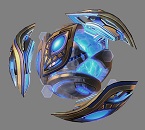BlueTemplar
Posts: 887
Joined: 4/29/2010
Status: offline

|
"the symptom of Olympus Mons" ?
quote:
ORIGINAL: arvcran2
Am curious to know why we do not have some kind of non random method of choosing a colony and star pair.
I tried the unclassified to see what kind of results I would get. Most atmosphere compositions were coming up with >95% Xe.
Mars has a similar day length to earth at 24 and a half hours.
The thing with a moon is the proximity of it's planet and the effects it would have on it. Not sure what planetoid is, large enough asteroid so that it is spherical?
"Planetoid" seems to be obsolete terminology (aka "Minor Planet") :
quote:
A minor planet is an astronomical object in direct orbit around the Sun (or more broadly, any star with a planetary system) that is neither a planet nor exclusively classified as a comet.[a] Before 2006, the International Astronomical Union (IAU) officially used the term minor planet, but during that year's meeting it reclassified minor planets and comets into dwarf planets and small Solar System bodies (SSSBs).[1]
Minor planets can be dwarf planets, asteroids, trojans, centaurs, Kuiper belt objects, and other trans-Neptunian objects.[2] As of 2019, the orbits of 794,832 minor planets were archived at the Minor Planet Center, 541,128 of which had received permanent numbers (for the complete list, see index).[3]
The first minor planet to be discovered was Ceres in 1801. The term minor planet has been used since the 19th century to describe these objects.[4] The term planetoid has also been used, especially for larger (planetary) objects such as those the International Astronomical Union (IAU) has called dwarf planets since 2006.[5][6] Historically, the terms asteroid, minor planet, and planetoid have been more or less synonymous.[5][7] This terminology has become more complicated by the discovery of numerous minor planets beyond the orbit of Jupiter, especially trans-Neptunian objects that are generally not considered asteroids.[7] A minor planet seen releasing gas may be dually classified as a comet.
Objects are called dwarf planets if their own gravity is sufficient to achieve hydrostatic equilibrium and form an ellipsoidal shape. All other minor planets and comets are called small Solar System bodies.[1] The IAU stated that the term minor planet may still be used, but the term small Solar System body will be preferred.[8] However, for purposes of numbering and naming, the traditional distinction between minor planet and comet is still used.
So it doesn't even need to be large/"spherical".
P.S.: Speaking of Unclassified Planets and random generation, I've tried to roll a "Drop me in a game now!" Unclassified with the following parameters :
- Open Farming is possible *and* not too penalized *and* requires water. (Sub-zero xenoplants don't seem to require water, though one wonders how can they be edible if they use any other kind of solvent ?)
- Capital starts in an area good enough to start with an open farm rather than a dome.
- Capital starts in an area with enough rain/water body so that open farming is still not worse than domed farming.
Well after rolling what must have been fifty planets, not managing to find one, I gave up.
Took me less than a dozen tries on Siwa class (which was still surprisingly high).
(Also, Medusa class seems to always prevent Open farming completely with both Bio Hazard and Alien Nutritional Toxicity at lvl 4.)
< Message edited by BlueTemplar -- 1/29/2021 9:37:47 AM >
|
 Printable Version
Printable Version








 New Messages
New Messages No New Messages
No New Messages Hot Topic w/ New Messages
Hot Topic w/ New Messages Hot Topic w/o New Messages
Hot Topic w/o New Messages Locked w/ New Messages
Locked w/ New Messages Locked w/o New Messages
Locked w/o New Messages Post New Thread
Post New Thread